Feb 16, 2005; Biology 2005 Albert Harris
Symmetry is the key concept for understanding shape formation
(The index of our textbook does not contain the word "symmetry",
although "asymmetry" has 5 page references (659-60; 354; 678, 382, & 381-3)
Physics, crystallography, chemistry, engineering and mathematics developed and used symmetry concepts, but biology hardly at all
And there are lots of good books on symmetry,
and how to apply symmetry to biology, physics, chemistry and other fields

* There are more different kinds of symmetry than you realize.
(and embryologists probably should be inventing new kinds!)
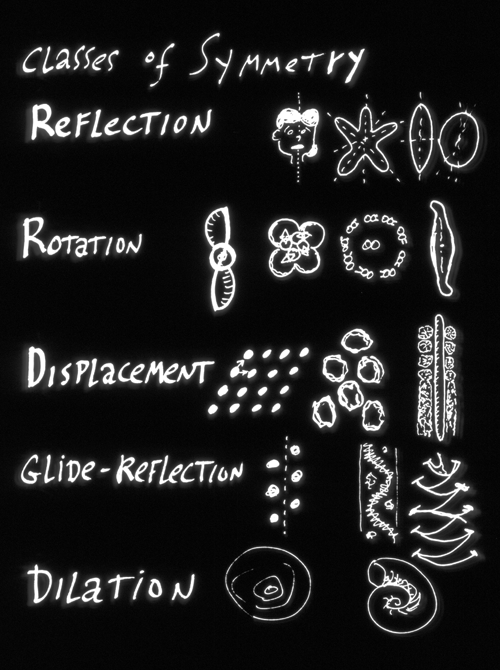
* Causal mechanisms often have their own symmetry.
(you won't be tested on the fact immediately below , but it should interest you)
** The conservation of energy is caused by a certain symmetry of physical laws; the conservation of momentum, charge etc. each result from certain symmetries in physical laws! (very deep stuff)
* A fundamental rule of Physics claims that (almost always!) the results of a set of causes have the same symmetries, or more, than the symmetries of the causes did. "Curie's Principle "
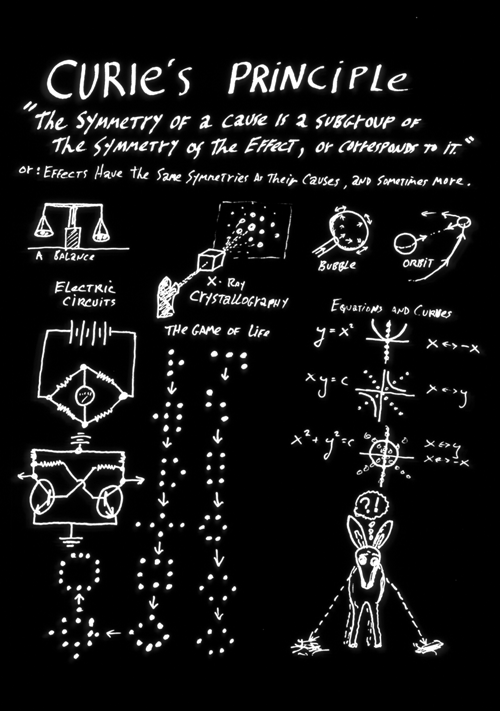
* The biggest difficulty is for causes to make shapes and structures become LESS symmetrical, but always the same, not just random.
* Breaking a sheet of glass produces fragments that don't have any particular displacement symmetries;
Bursting a spherical bubble also breaks symmetry, because the fragments have NO symmetry.
* Again, and again, in developmental biology, the problem is to change embryos or organs from one symmetry to another symmetry, and the big difficulty is to make them less symmetrical, but not random, and continuing to have certain symmetries, but selectively eliminating others.
What different kinds of symmetry can we find in the following?
-
The letters A B C D E K L T U V
What additional kinds of symmetry are in the following?
The letters H I
The letters N S Z
The letter O (if it were circular)
The letters M W what about a zig-zag line?
A ladder? Or the letter E if it continued on top and bottom
A centipede
A starfish
A jelly-fish
A nematode worm
A series of concentric circles
A snail shell
The vertebra (bones of a human or other vertebrate backbone)
Some of the most important kinds of symmetry.
(Mirror Image) Reflection SymmetryRotational Symmetry
Displacement Symmetry
Glide Displacement Symmetry
Dilation Symmetry
(which perhaps should have been called "Magnification Symmetry")
The following have combinations of symmetries: Please figure out what they are.
A snail shell
A diatom shell
Ribs ?
Vertebra ?
The arrangements of fish scales, reptile scales, & bird feathers?
Snake color patterns ?
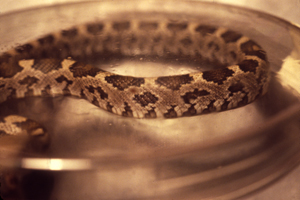
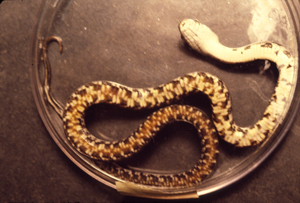

Please invent some problematical examples of biological symmetry.
Why are soap bubbles spherical?
What is the symmetry of the air pressure inside?
What is the symmetry of the "surface tension" (contractile force) in the soap film surface of the bubble.
If the causes of a shape are spherically symmetrical, then what shape will be the objects these causes create?
What causes (many) balloons to be spheres?
To cause a balloon to be less symmetrical than a sphere, then you would need to change the symmetry of what?
Answer: the tension in the rubber need not have spherical symmetry; his tension can be srongre in one direction than in the direction perpendicular to that direction
What can we conclude about the reasons why the oocytes of many species of animal are spheres?
NO, the are not made of soap!
(Witches are made of wood! And therefore weigh the same as a duck! M. Python, etc.)
What can we conclude about cleavage and blastula stages?
What about the symmetry of the eyeball, the cornea and lens??
a Dictyostelium slug? a stalk? a mass of spores? (an individual spore?)
The symmetry of a flagellar axoneme??
In the game of life, or other cellular automata, do the patterns become less symmetrical? Or more symmetrical? Test it on the web site program
The following is an example
![]()
How would you have to change the rules of a cellular automaton, in order to make it able to "break" symmetry?
As embryos develop to form the anatomy of the body,
does symmetry increase? (are new symmetries created?)
Or does symmetry decrease ("breaking" of some symmetries)?
What symmetry is broken when a teleost fish egg's cytoplasm flows to the animal pole?
(It starts out with spherical symmetry, and decreases to radial symmetry = an infinite number of planes of mirror image symmetry, intersecting along a single line)
What symmetry is broken when a frog or salamander gastrulates, forming its blastopore below the equator on one side?
(It starts out with radial symmetry, and this gets decreased to one plane of mirror image reflection symmetry)
What symmetry is broken when a bird or reptile embryo develops its anterior-posterior axis?
(It starts out with radial symmetry, and this gets decreased to one plane of mirror image reflection symmetry).
-
...when a mammal blastocyst develops an inner cell mass?
(It starts out with spherical symmetry, and decreases to radial symmetry)
...when a mammal inner cell mass develops and anterior-posterior axis?
(It starts out with spherical symmetry, and this gets decreased to one plane of reflection symmetry)
...when neurulation occurs?
(It develops displacement symmetry along the anterior-posterior axis)
...when segments develop along the anterior-posterior axis?
(The displacement symmetry along the A-P axis gets reduced from displacement by any distance, to displacement symmetry only by certain distances)
...when aggregating Dictyostelium amoebae form a slug?
(The amoebae were randomly distributed, but then form an aggregate with radial symmpetry;
but while it is crawling the slug has one plane of reflection symmetry.)
...when a Dictyostelium slug forms a fruiting body?
(Radial symmetry is restored)
...when individual Dictyostelium cells become spores?
(The spores have axial symmetry, plus [I think!?] an additional plane of reflection symmetry perpendicular to the axis of symmetry [like human red blood cells do, for example])
Some other species might have spores with spherical symmetry.
...when embryonic regulation occurs (for example, when a
Dictyostelium slug is cut into many pieces)?
Notice that this amounts to a kind of dilation symmetry!
Although most of the anatomical structure of our body has one plane of reflection symmetry, several of our internal organs do not have this reflection symmetry. They have NO symmetry.
Mutation of a certain human gene causes Kartagener's syndrome (the heart is on the right in half such people)
This set of facts seems to prove two conclusions:
1) That the mechanism for "breaking" reflection symmetry in human development normally uses the lack of reflection symmetry of the flagellar axoneme (which lacks reflection symmetry, although ironically it has 9-fold rotational symmetry).
2) When embryos are deprived of this normal means for breaking reflection symmetry, then they still manage to break that symmetry, but they make a random choice.
Notice how our textbook reduces this phenomenon to a matter of identifying the genes and proteins!
The following is a joke! Let's invent a new kind of symmetry and a syndrome!
"Molecular-explanation symmetry" All biological phenomena are symmetrical with respect to changes in the names of the molecules and genes that cause them (signalling molecule, membrane receptor, transcription factor). Most developmental biologists seem to suffer from Kartagodelenda's Syndrome [If you know Latin, and who Cato was, this is also a joke] which is a genetic inability to notice any other phenomena in embryonic development, besides gene transcription, secretion of signalling molecules, binding of signals to receptors, and activation of transcription factors. All chapters in the textbook are therefore left the same when you change the names of the specific protein and genes. This symmetry corresponds to the Law of Conservation of Gullibility.
END OF JOKE Resume thinking.
In terms of symmetry, or changes in symmetry, either breaking symmetry, or increasing symmetry, or conserving symmetry, consider what happens in each of the following:
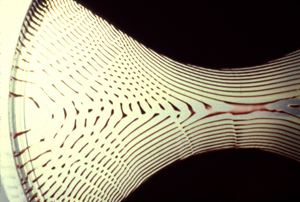
Reaction-diffusion systems, as were invented by Turing.
Answer: These break displacement symmetry, but produce a pattern that still has some displacement symmetry, but only for certain distances. The mechanism starts with material having displacement symmetry for any amount of displacement; and the resulting pattern has displacement symmetry for only certain distances, which are the wave-lengths of the pattern generated.
Embryonic regulation, as when Driesch separated the first 2 or the first 4 cells of echinoderm embryos. (or when two one-celled stage embryos are combined)
Hint: The first thing the fragments do, after separation, is to become spherical.
Then regulation allows formation of half-size or quarter-sized embryos, which can be regarded as examples of dilation symmetry.
When the location of sperm entry controls the site where the blastopore will form,& the future bilateral axis of the body.
Answer: This breaks radial symmetry, but leaves one single plane of reflection symmetry. Notice how an exterior stimulus serves somewhat the same function as the axoneme asymmetry served in the phenomenon that fails to occur in people who have Kartagener's Syndrome.
Conjoined twins ("Siamese twins") always are joined along a plane of reflection symmetry (sometimes with a small amount of rotational symmetry)
Figure out what this tells us about the underlying control mechanisms of normal development, and about the causes of this kind of twinning?
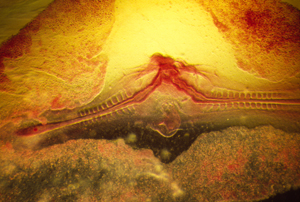
Answer : This is a VERY deep question. Don't worry if you can't solve it. Those of you who can think of explanations, then please tell me what they are. An interesting fact is that one twin (of a conjoined pair) "normally" has its heart asymmetry backwards, in the same way as half of people who have Kartagener's syndrome